
Hunts
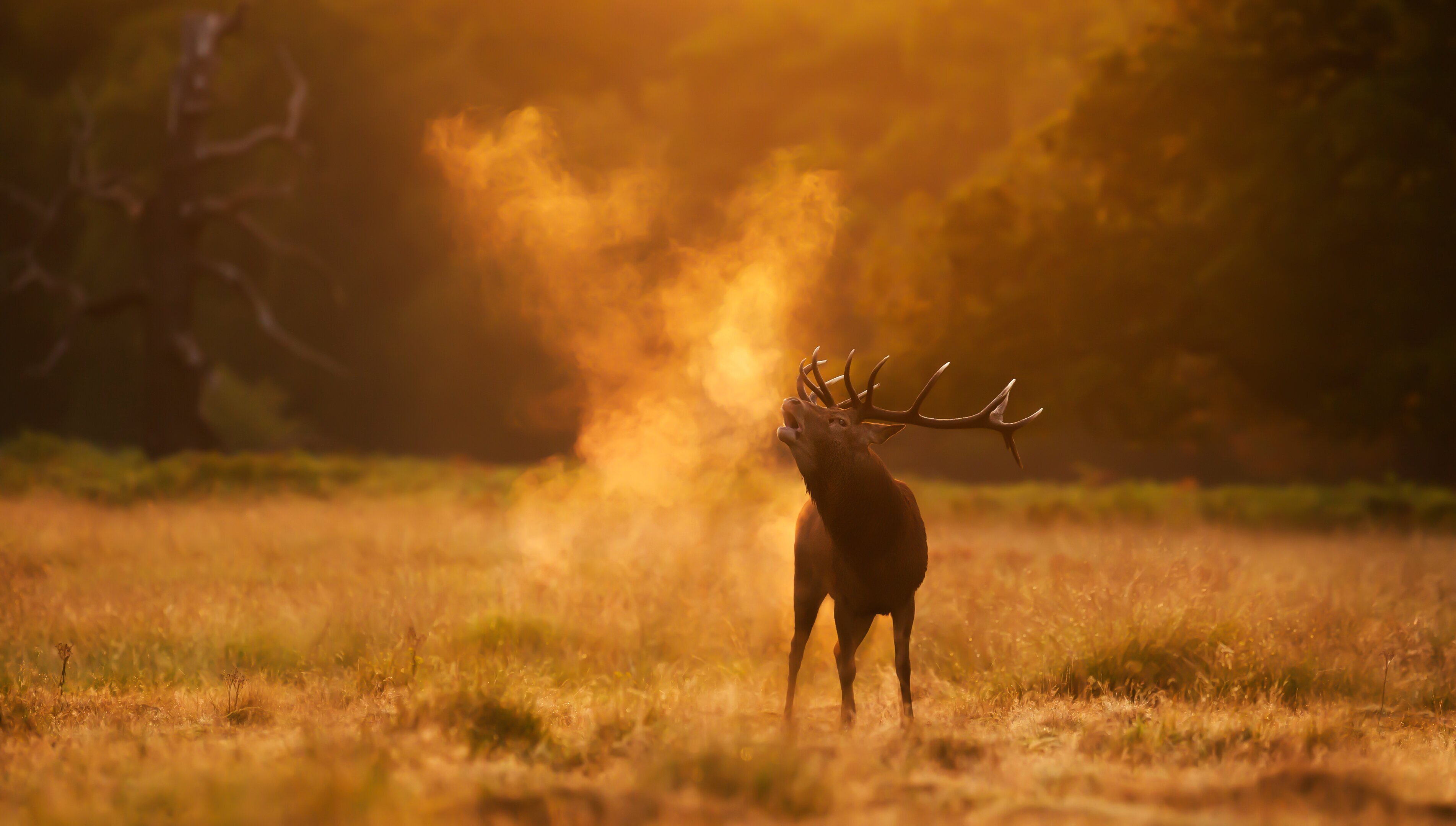
Red deer in rut
The red deer is referred to as the royal game. In today's time, hunting a deer is an unforgettable experience for every hunter for a lifetime.
The most beautiful period of deer hunting is the time of the deer rut. An old Czech saying states that the peak of the deer rut falls on St. Wenceslas Day, September 28th.
The rut usually begins in the first half of September and lasts about 4 weeks, according to the rut of the hinds (female deer). The adult stag dominates the herd of hinds and tries to keep them together as much as possible. When a hind strays from the group, he drives her back to the herd with blows of his antlers, protecting the entire herd from approaching rivals. During this time, the stags can lose up to a quarter of their body weight because they don't have time to graze.
During this period, the stags emit deep-throated calls, which are most intense in cold weather during the evening and at night. Experienced hunters can distinguish, based on the stag's calls, whether it's a searching stag or the main stag that controls the herd. Stags that are five years old or older accompany the main stag's herd as lateral stags, trying to lure away some hinds from the group. In such cases, fierce battles with the main stag ensue.
The main stags call most intensively as they constantly watch the herd and drive away approaching rivals. Stags older than ten years call only two or three times in the evening and morning. They have a rough and hoarse voice.
During the rut, the stag thrashes his antlers against tree branches and shrubs or rams his antlers into the ground, throwing up torn grass and moss into the air. On the rutting grounds, he scrapes the ground with his hooves and then lies down on the dug-up spot to cool down. The areas where the stag moves during the rut emit a strong odor due to the so-called "prk" scent."
Luring
A deer can be attracted using a deer call, which imitates the roar of a rutting stag.
To successfully lure, one must know the right spots for slopes and animal resting places during the rutting season. They must master the art of cover, understand wind direction, animal behavior, and, above all, be able to perfectly mimic the sound of the animals.
Hunting period
September 10th - October 10th
Peak of the deer rut falls on September 28th
Biology
Deer are common in extensive coniferous forests as well as in agricultural landscapes at higher altitudes. They also inhabit deciduous and mixed forests at lower altitudes with open spaces. In forests, they prefer all areas where plants have access to sunlight for food, such as clearings and forest meadows.
However, their diet composition changes depending on the season. During any period, deer primarily feed on a large amount of grasses and herbs, which they graze on forest clearings, along roadsides, and around the forest. In the fall, they feed on acorns, beech nuts, apples, and other tree fruits. In winter, they nibble on soft deciduous leaves and readily venture into fields for food.
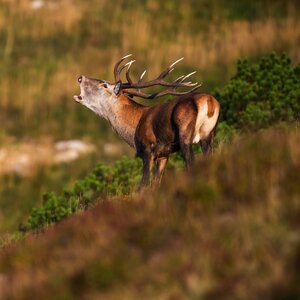

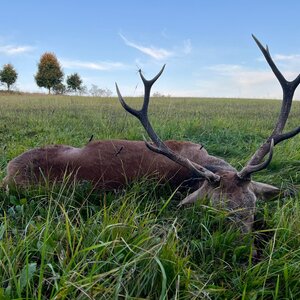
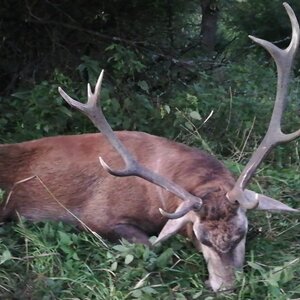
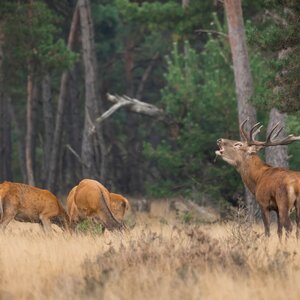
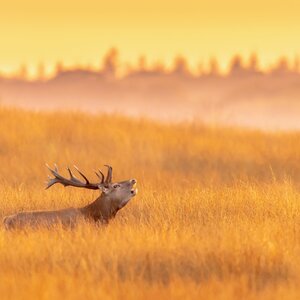
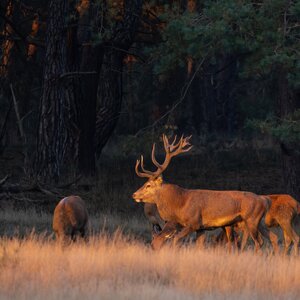
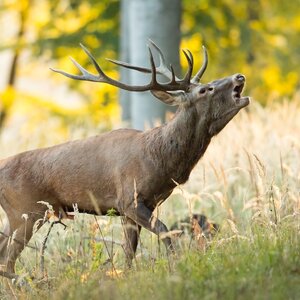
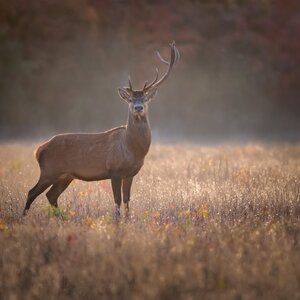
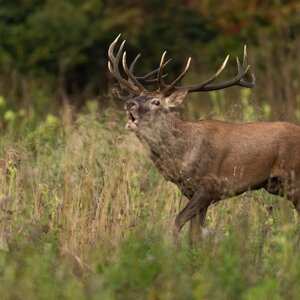
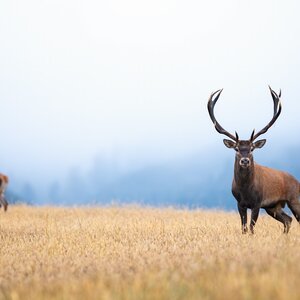
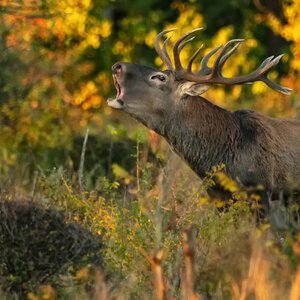
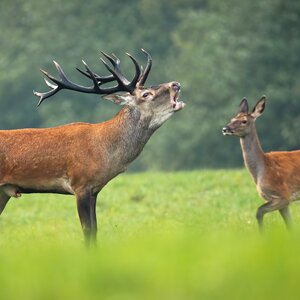
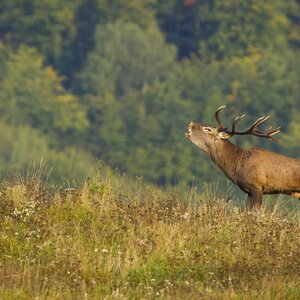
.jpeg?locale=en)


.jpg?locale=en)
